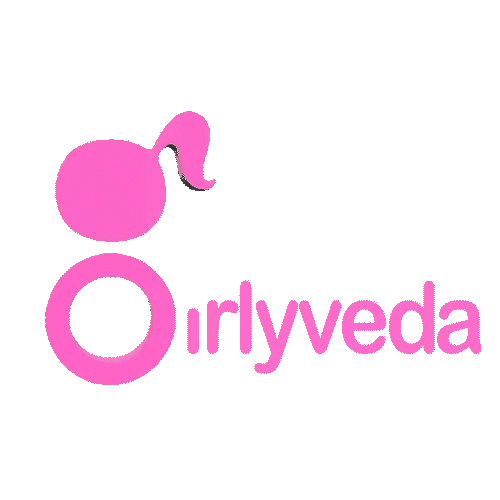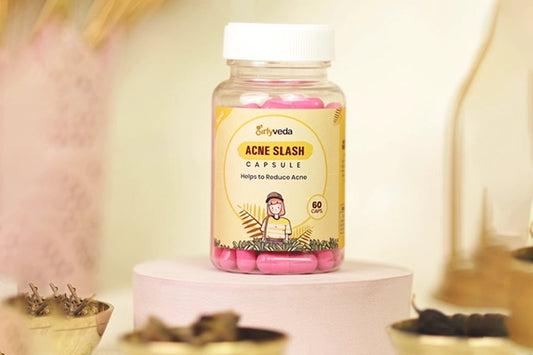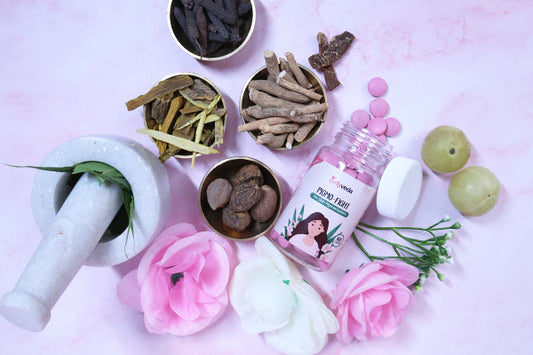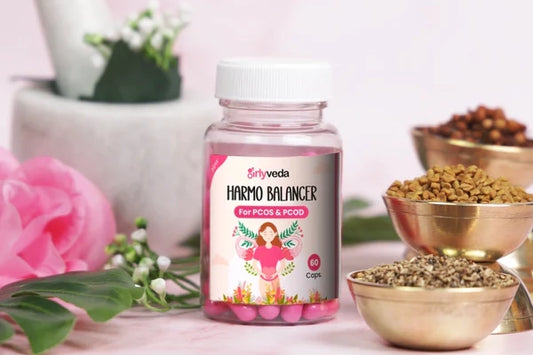Pigmentation and dark spots are widespread skin problems and affect people with all skin types and of all ages. These uneven patches are challenging to address, whether hormonal changes, extreme sun exposure, or post-inflammatory hyperpigmentation causes them.
Ayurveda offers a natural and holistic approach to treating pigmentation and allied skin problems. It focuses on the use of herbs/herbal supplements and dietary changes to cleanse the body.
In this post, learn about Ayurvedic medicine for pigmentation with a few basics. Keep reading it till the end if you are looking for a chemical-free, natural, safe, and long-lasting solution to address pigmentation.
What Are Dark Spots and Pigmentation?
Dark spots and pigmentation are hyperpigmentation. They refer to the skin areas that are darker than the surrounding skin. This darkness occurs due to the excess production of melanin, which is the pigment responsible for skin colour.
These dark spots appear as age spots, freckles, or larger patches. They are usually harmless, but they can affect a person's confidence. Here are common types of pigmentation:
-
Melasma – Hormonal pigmentation generally occurs to women who are pregnant or on birth control.
-
Sunspots (Solar Lentigines) – Extreme and extended exposure to sunlight, mainly UV rays, causes this pigmentation.
-
PIH (Post-Inflammatory Hyperpigmentation) – It is the result of burns, acne, or skin injuries.
-
Age Spots – It results from cumulative sun damage over the years.
Herbs Used in Ayurvedic Medicine for Pigmentation
Ayurveda highly relies on time-tested natural herbs that cleanse the body, enhance liver function, and promote an even skin tone by regenerating new cells. Here are four herbs widely used as key ingredients in pigmentation Ayurvedic medicine:
1. Chirata (Swertia Chirayita)
Ayurvedacharyas or Ayurvedic doctors love to recommend Chirata for its detox-supportive and pitta-pacifying actions and bitter principles. This herb contains chemical compounds such as swertiamarin, mangiferin, and amarogentin, which are effective in addressing skin issues.
Scientific studies
-
According to a 2023 study, mangiferin is effective in lowering melanin synthesis and supports skin brightening.
-
A 2017 study states that Swertia carries anti-melanogenic properties and can lower melanin accumulation.
How to use
- Make a paste using Chirata powder and yoghurt or aloe vera gel. Apply this paste to the affected area. Leave it for 10-15 minutes. After that, wash that area with plain water. Do it 3 to 4 times a week.
-
Or, soak a few Chirata thin, small sticks in a glass of water overnight. Drain and drink the water in the morning. You can take pigmentation tablets or capsules made of Chirata after talking to your doctor.
2. Kutki (Picrorhiza Kurroa)
In Ayurveda, Kutki is a traditional bitter tonic and is used to enhance liver function and balance pitta dosha. Used as an ingredient in the best Ayurvedic medicine for pigmentation, it helps lower inflammation, remove toxins, and reduce skin rashes.
Scientific evidence
-
A 2023 NCBI study states that Kutki has membrane-protective and antioxidant effects. Further, it says that using Kutki regularly for 3 months can help lower melasma.
How to take it
- Make a paste using Kutki and yoghurt or lactic acid. Apply the paste 2-3 times a week for 2-3 months.
-
Alternatively, consider taking pigmentation capsules formulated with Kutki, as advised by your doctor.
3. Dhamasa (Fagonia Cretica)
Since ancient times, Dhamasa has been used for addressing systemic clearing and heat conditions. This herb has anti-inflammatory and antioxidant properties. Due to this, it is a key ingredient of Ayurvedic medicine for hyperpigmentation.
Scientific studies
-
According to a 2024 study, Dhamasa is effective in lowering skin inflammation and rashes.
How to use
- Drink a cup of Dhamasa tea once a day for 2-3 months. To make this tea, boil a few Dhamasa leaves in water. Strain and drink this water as a tea.
- Use it as a scrub twice or thrice a week. To make a face scrub, mix Dhamasa powder with rose water.
4. Revand Chini (Indian Rhubarb)
Revand Chini works as a natural alternative to hydroquinone. It gently lightens dark spots. Due to the rich presence of anthraquinones, it helps exfoliate dead skin cells and generate new cells. Used as a key ingredient in pigmentation removal capsules, it helps lower tanning and sunspots.
How to use
- Make a paste using Revand Chini and yoghurt. Apply this paste to the affected skin area and leave it for 15 minutes for better absorption. After that, wash off with plain water.
- Or prepare a mask by mixing Revand Chini with multani mitti. Use this mask twice a week. It helps cleanse the skin deeply.
Final Words - Which Is the Best?
No single herb could be the best Ayurvedic medicine for pigmentation until you take it after consulting a dermatologist. Combining any two herbs can work better and get your desired results. Consistency in their use can help you get faster results by addressing the associated root causes.
If finding and combining these herbs is a tough job, buy our Anti Pigmentation Capsule. This Ayurvedic pigmentation medicine contains all four stated herbs and helps you achieve spotless, glowing skin over time. Buy it today.
FAQs:
Q1. Which Ayurvedic medicine is best for pigmentation?
Ans: Girlyveda's Anti Pigmentation Capsule is the best Ayurvedic medicine for pigmentation. Formulated using Chirata, Dhamasa, Kutki, and Revand Chini, it helps reduce skin inflammation & rashes, fight skin allergies, and generate new cells. All these lead you to have spotless, glowing skin.
Q2. What is the best treatment for hyperpigmentation and dark spots?
Ans: The best and personalised Ayurvedic treatment for pigmentation includes the prescription of pigmentation capsules and dietary modifications. Along with consuming pigmentation Ayurvedic medicine, avoid eating oil & spicy foods and keep yourself hydrated by drinking water and homemade juices.
Q3. How many months to remove dark spots?
Ans: Using Ayurvedic medicine constantly for 2-3 months can help you remove dark spots and pigmentation.
Q4.Which herb is best for pigmentation?
Ans: No single herb is the best for pigmentation. Combining Chirata with Kutki or Dhamasa can help you get better results. Talking to your doctor about pigmentation Ayurvedic medicine can help you get faster and more positive results.
Q5.How to remove pigmentation in Ayurveda?
Ans: To remove pigmentation in Ayurveda, take a pigmentation capsule/tablet once a day, apply a herbal face pack, and stay hydrated.












Thoughts on "Best Ayurvedic Medicine to Remove Dark Spots and Pigmentation"